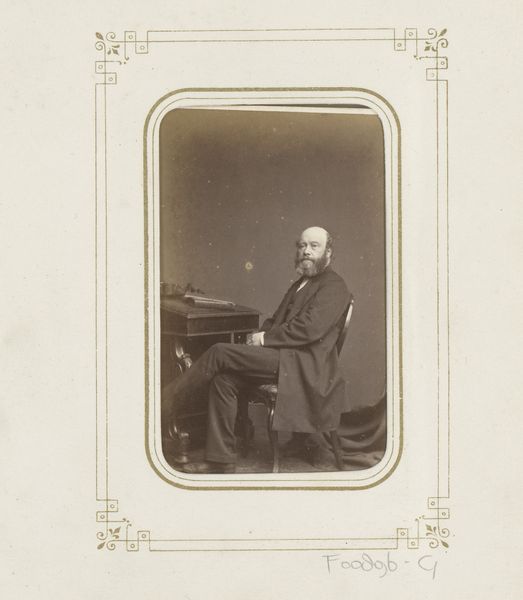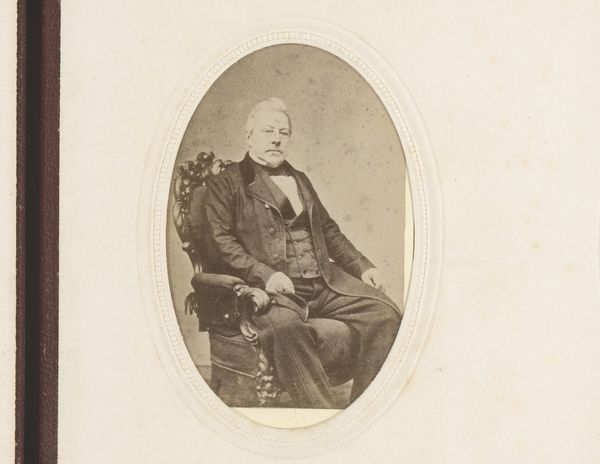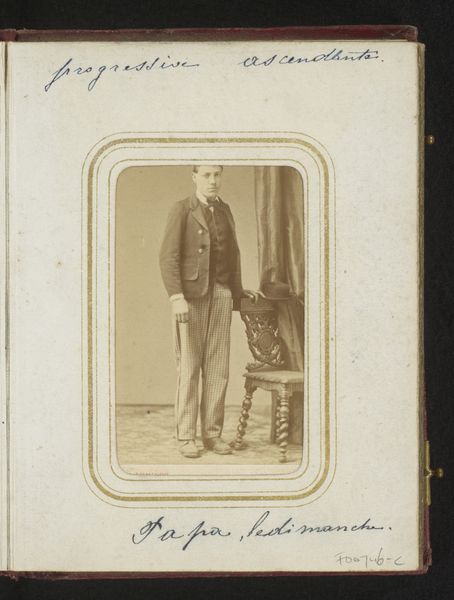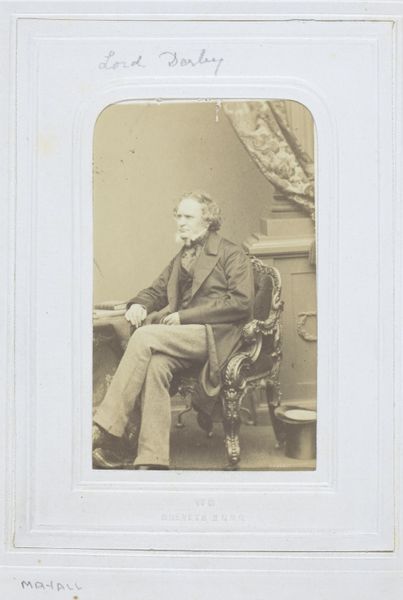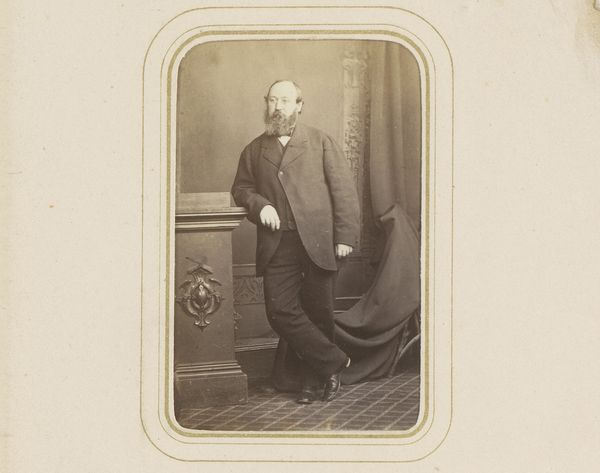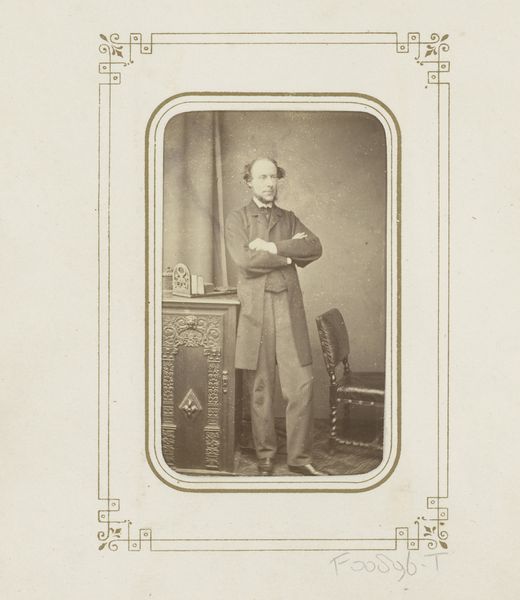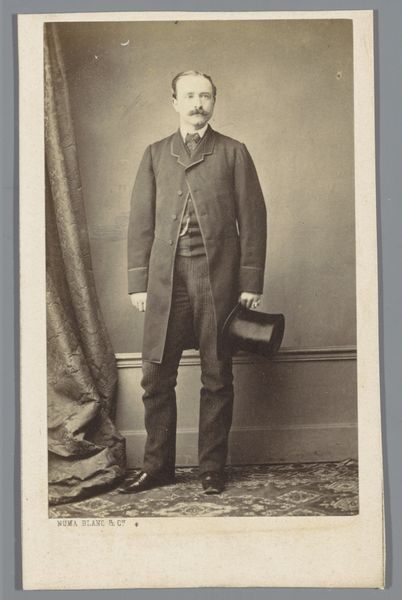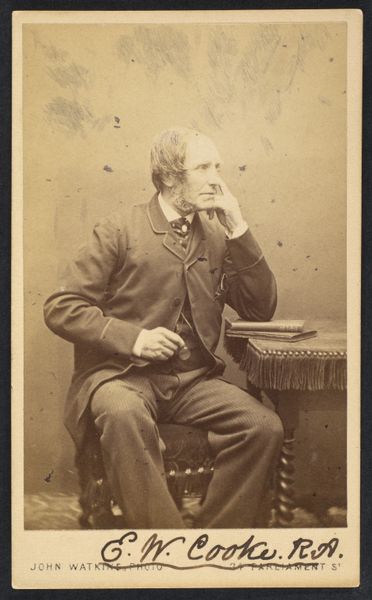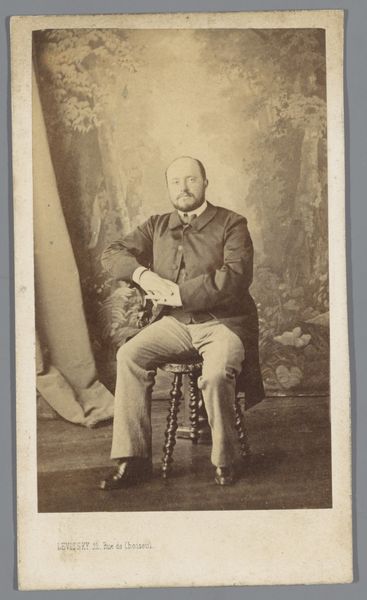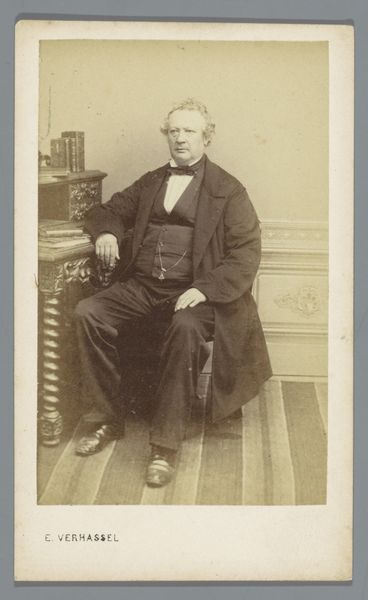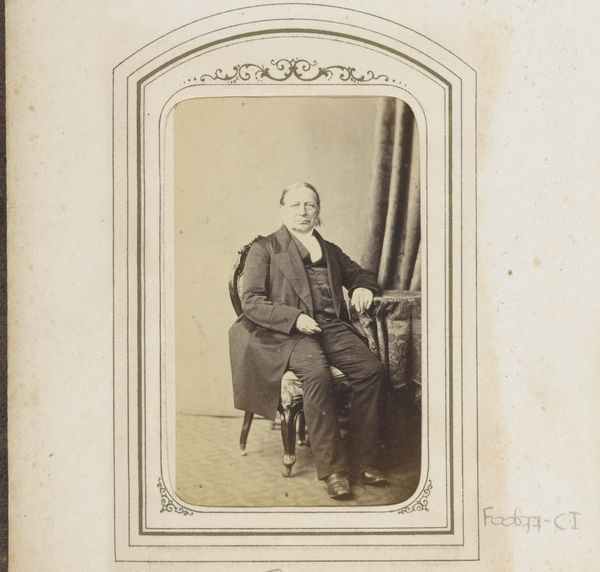![[Riefstahl ?] by Carl Wigand](/_next/image?url=https%3A%2F%2Fd2w8kbdekdi1gv.cloudfront.net%2FeyJidWNrZXQiOiAiYXJ0ZXJhLWltYWdlcy1idWNrZXQiLCAia2V5IjogImFydHdvcmtzL2I4ZmZjMmVhLWY0MjItNDMzNS1hOWE0LTUzNDc3Yjc4ZGZmNi9iOGZmYzJlYS1mNDIyLTQzMzUtYTlhNC01MzQ3N2I3OGRmZjZfZnVsbC5qcGciLCAiZWRpdHMiOiB7InJlc2l6ZSI6IHsid2lkdGgiOiAxOTIwLCAiaGVpZ2h0IjogMTkyMCwgImZpdCI6ICJpbnNpZGUifX19&w=3840&q=75)
daguerreotype, photography
#
portrait
#
16_19th-century
#
daguerreotype
#
photography
#
19th century
#
men
Dimensions: Approx. 10.2 x 6.3 cm (4 x 2 1/2 in.)
Copyright: Public Domain
This photograph, "[Riefstahl ?]," was captured in Berlin by Carl Wigand, using the wet collodion process. This technique, popular in the mid-19th century, involved coating a glass plate with a light-sensitive emulsion right before exposure. The resulting image, a subdued sepia tone, carries a distinctive visual quality. Consider the labor involved: from preparing the chemicals to meticulously coating and developing the plate in a darkroom. This was a craft, requiring precise skill and timing, far removed from the instantaneity of modern photography. Photographs like this were instrumental in shaping social identities. They were tools of documentation, memory, and self-presentation, and a rapidly growing industry. This image is not only a record of a sitter named 'Riefstahl,' but also of the complex interplay between technological innovation, artistic practice, and social aspiration. The photograph challenges any strict divide between art and craft, reminding us that all images are shaped by material processes and historical contexts.
Comments
No comments
Be the first to comment and join the conversation on the ultimate creative platform.
